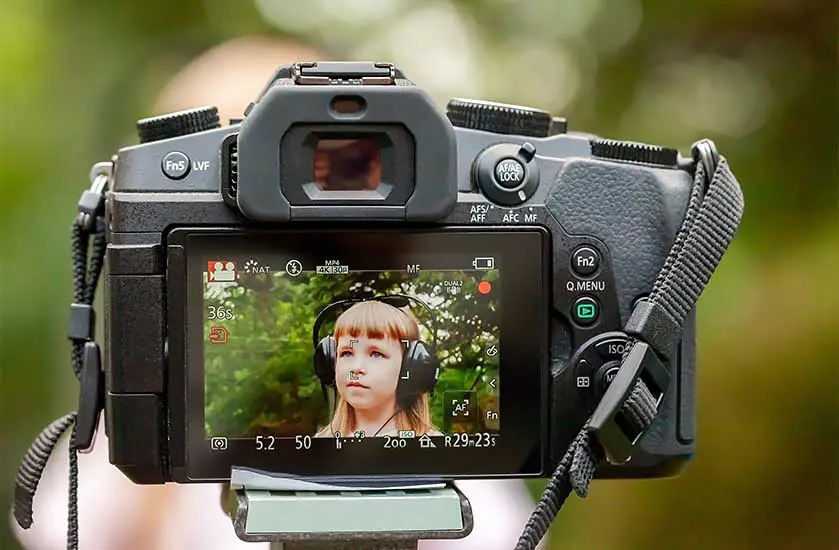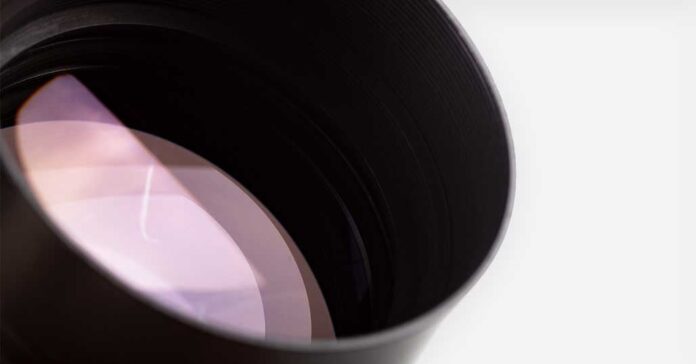As a stock photographer with over 4 years of experience having my photos over on over 12 different microstock agencies I can now safely share with you all the ins and outs of the stock photography world from my personal perspective. Can you earn any “real money” by selling stock photos? Well, grab a cup of coffee and let’s take a deep dive into the topic, as there is much that needs to be said here. No remorse and no sugarcoating!
- My 4 year stock photographer journey
- The portfolio size and quality matter equally
- What should you shoot, and what sells on microstock websites?
- The agencies themselves – a ranked list
- Microstock vs. macrostock photography
- Photo pricing – Image licensing and subscriptions
- What about the actual earnings? – Real talk
- The verdict – Is stock photography worth it?
- Bonus: Stock video – selling your footage
[All the photos used in this article are photos taken from my actual microstock portfolios.]
My 4 year stock photographer journey

Over the course of the last 4 years I’ve been selling photos on various microstock sites, the most popular of them being Shutterstock, Adobe Stock, Getty Images/Istock, Dreamstime, Deposit Photos, 123RF, Canva and more. [Skip to the full agencies list]
Aside from growing my sales and earnings, I’ve learned much about photography from the technical side, built my portfolio which now consists of over 2000 images and progressed much when it comes to optimizing my workflow including photo processing and keywording, and knowing what sells and what really doesn’t.
Recently I’ve also started to get into stock video, currently having almost 700 4k video clips in my portfolio. The income from these pieces of footage starts to slowly trickle in, which is nice to see. Selling stock video is a little bit different from selling stock images and I’ve made a little bonus note at the end of this article to address just that.
All in all, attempting to earn money on stock photography and video certainly isn’t a sprint, and it’s much more like a long distance marathon. Contrary to popular belief, it might still be worth it for you depending on what kind of money do you expect, and what amount of time you can commit for creating the content and learning your craft on the way. We’ll get to that in a short while.
The portfolio size and quality matter equally
As I’ve already mentioned, my portfolio currently consists of over 2000 images, with a optimistic prognosis of rising up to around 3500 quality photos towards the end of the year. In the general microstock business in most cases this is still considered a “small” portfolio. And if you think about the whole Shutterstock collection now consisting of over 400 million photos, it really is.
The general rule of thumb here is the same for each and every stock photo and stock video website. There are hundreds of thousands of contributors which upload an abysmal amount of content to all the platforms I mentioned earlier every single day.
To compete with them, you would need to do “just” two things: produce large amount of quality content and push through the rough beginnings with relatively small turnover.
How can you attempt to do that as a beginner? Well, there is no other way than to simply start and test the waters. First, simply go on the Shutterstock or Adobe Stock marketplace and look around. What content is trending on the front page right now? What comes up when you use the search box and type for instance “man signing a business contract”, or “happiness concept, no people”?
After you get a grasp on the kind of content that is popular on the site (and visually assess its quality) you can then attempt to sign up for a contributor account here. Better to do this sooner than later – in the very beginning you’ll have to send a few of your best pictures for the initial review. This can take up to a few days, and after that you will know whether you’ve been accepted as a contributor or not.
And now the most important thing: although having as much quality pictures in your portfolio as possible should be your goal, this only applies to pictures that have actual sale potential and are properly titled and keyworded.
At all costs avoid simply taking pictures of random objects around you, or random snapshots of every single thing that catches your eye when you’re for example roaming the city. It’s extremely hard to avoid doing this, and I, in the very beginning had also fallen into this trap while starting out.
Photos with minimal “commercial value”, so photos that no one searches for on microstock websites and no one really feels the need to pay for simply won’t sell, will clutter your portfolio, make it look unprofessional, and most importantly processing and keywording them can take a large chunk of your time that you could spend on producing content that actually has a chance to convert.
The bottom line is: pumping out content is important, but only if it has potential to sell – otherwise, it’s simply a waste of time.
More about what photos are actually needed in the next paragraph!
What should you shoot, and what sells on microstock websites?

What sells then? Well, this could be a topic for a whole new article, but what I can say now with full certainty is this:
- Analyze the featured photos on popular websites and blogs – these are in many cases photos sourced from microstock agencies. If a stock photo is up somewhere out there on a popular blog post or an advert, this means that it was useful enough to be sold.
- Look inside some tech magazines, leaflets or brochures – these also most of the time make use of large amounts of rather simple stock photos. Again, there are certain trends that are prevalent and after noticing the stock-sourced photo content in the wild you’ll be able to get the gist of what it is.
- Don’t copy the work of others – recreating the exact pictures that are already owned by other stock photographers is not only simply “not fair”, but it also isn’t “efficient” if you want to look at it that way – it simply makes more of the content that’s already out there meaning more competition and lower earnings potential on the particular topic/keywords in question.
Recently, many stock agencies seem to push out monthly “shot lists” which can be found on their sites, in their email newsletters or directly in their contributor panels, and attempt to encapsulate the monthly or quarterly trends in stock photography. While these can be great for beginners to get the basics of the modern “stock-like” aesthetic trends, oftentimes the type of content they propose may be hard to shoot while starting out. Nevertheless, these also can be a great reference. Now that you know about these, use them wisely!
The most important thing here is: topics like animal pictures, generic business lifestyle scenes and many others are in most cases already overcrowded by overwhelming amounts of “studio-quality” content which already ranks high and sells well.
Following the example, if you for instance decide to take cute photos of your pet and attempt to sell them via microstock agencies, you might be competing with thousands of photographers that specialize in animal photography and have hundreds of their photos already up online and selling well. Try to choose topics that aren’t already covered to the fullest. It’s a bit similar to finding long-tail keywords to rank for as a SEO specialist for those of you who know something about this matter.
In general, the very same content rules apply to video content on various stock websites. The more quality content you have, the more likely you are to be found out by potential buyer. Persistence is key.
A question that is thrown around a lot on various microstock forums and online groups is: can I reupload content I simply find on the internet to stock websites, or simply search for CC0 copyright free content and attempt to resell it to earn money? Absolutely not. Of course, the TOS and rules in various stock photo agencies do differ, but one thing is common in all of them. All the content you’re attempting to sell, should be your own intellectual property, and/or be created by you and you alone. Attempting to cheat that system can result in a permanent ban in case of virtually every stock platform that exists out there.
The agencies themselves – a ranked list
Here is the list of most of the stock photo agencies I work with, ranked from my personal highest monthly earners on top to the lowest ones on the very bottom. I also added my own short comments to each one so that you may have at least a little bit better image on how things look on my side regarding these photo marketplaces.
- Shutterstock – one of the 3 biggest microstock agencies as of now, high traffic, large amount of sales.
- Adobe Stock – similar amount of sales, in general larger return per image than on SS and IS.
- iStock / Getty – the last of the big 3, large amount of sales, high traffic, nice earnings but high amount of “penny sales”.
- Dreamstime – not that many sales per month, relatively fair subscription pricing.
- DepositPhotos – a little bit worse than Dreamstime in my own experience, still quite a few monthly sales.
- Canva – they do not disclose individual subscription sales and the amount of said sales, otherwise, pretty good for what it is.
- 123RF – Again, similarly to Dreamstime and DepositPhotos, a few monthly sales, “regular” microstock pricing.
- Alamy – rare sales, at least with my type of content, potential for higher sales although sometime ago “penny sales” started to appear on a regular basis.
- Mostphotos – a small nice microstock website without much traffic and sales traction, but with a neat free photo backup service available to all contributors.
- Pond5 – mostly video sales, almost non-existent photo sales at least with my present material.
Note that this list contains only the most popular stock photo agencies and many smaller (or highly localized) businesses that I do not work with are not taken into account here (for example Pixta).
More on the actual photo pricing and earnings in a short while.
Microstock vs. macrostock photography

You might have heard the term “marcrostock photography” at some point somewhere. This term refers to agencies that are, most commonly 1 – harder to get into than most of the microstock agencies that are on the market today, 2 – easier to make better money on, provided you are an experienced photographer.
Macrostock approach to photography is very different from the microstock one, and in general the regular microstock kind of photography aesthetic is not well received there. One of these agencies is for instance Stocksy.com, offering high quality pictures that are much different from the regular microstock material you can encounter pretty much everywhere nowadays. Be sure to check some of these agencies out if we got you interested.
Photo pricing – Image licensing and subscriptions
The photo pricing on microstock websites generally looks like this. A microstock agency client (a person or a business who wants to purchase a photo) can either:
- Purchase a single photo instantly (or a few photos) for a “higher” price of a few dollars per image. [~$.$$]
- Get into a monthly subscription deal with the agency which will allow the person to download a larger amount of photos (or an unlimited amount) for a certain monthly subscription fee. – This is the most popular option among buyers in all microstock agencies. [~0.$$]
- Purchase an “extended license” for a photo. In this case while you still retain the rights to keep on selling the image (and to the image itself), you’ll receive more money, according to the particular extended license that the buyer purchased. Extended licenses often have to do with using photos in books, TV shows, large-scale business marketing campaign materials and so on. It depends on many factors, and these kind of sales are generally quite rare. [(~$)$$.$$]
In the square brackets I’ve put the estimated amount of money you may receive for a single download in most cases. Note that this may vary largely from agency to agency. As you can see, the usual prices paid per one image download aren’t exactly high, especially taking into account that most photos nowadays are sold via subscription deals.
In the bigger picture however, what matters in the end is the RPI – return per image, so the final amount of money you earned in one month, divided by the number of pictures you’ve sold. This is the basic measurement of performance in the microstock world, which is highly reliable, as later in your journey you will likely sell around a few hundreds photos per month, just as I do now.
The amount of money that you finally get from the actual sale also can differ, but it’s always stated in the digital contract you are prompted to accept when signing in as a stock contributor in a microstock agency. Generally these can vary anywhere from 15% to 40% of the final sale price (so what the buyer pays for that one particular image). So-called “exclusive contracts” often offer better percentages, but in turn they typically require you to upload the pictures you take during one photo session only to the agency you have signed the exclusive deal with. Keep in mind that exclusivity deals and their own ins and outs also differ between various agencies.
Depending on the stock agency, there might also be more deals available for the buyers, such as a possibility to buy all the rights to the selected image, however the ones I listed above are the most popular throughout the businesses I’m working with, looking at them from the buyer’s perspective.
Note: A new modern trend in some stock agencies (ex. Canva, StoryBlocks) is using something called a “shared revenue pool” to calculate the contributor’s earnings at the end of each month/customer billing period. This essentially means using a large pool of money made on selling all the pictures on the platform that take part in the program, that at the end of each month is shared between the contributors taking into account a few variables such as each contributor’s portfolio size, account engagement, number of downloads and so on. One disadvantage of such a method is often not having direct access to the sales data, however this too will depend on the agency in question.
What about the actual earnings? – Real talk

Although according to the TOS of some agencies I work with I can’t disclose the exact earnings in many of those due to the confidential nature of this information, I can certainly give you an image of what you can expect to earn with stock photos with previous experience in photography and while targeting image topics that sell.
If I were to speak solely from my own experience – going from limited knowledge about stock photography 4 years ago and having a pretty good idea of what I’m doing and what I want to do with this in next few years I’d say this.
Without much previous experience, realistically speaking, in terms of sheer $ amount, don’t expect to hit double digits in the first few weeks/months of your work, this simply doesn’t happen very often.
As I’ve mentioned earlier, to be as straightforward as I can, at this point of my journey from my combined earnings sum up to $$$ amounts per month. Not bad for some extra pocket money, but not quite nearly enough to make a living at least in my country of residence.
If you’d like to know the exact figures that can be made in the microstock business world, I highly recommend you to check the two blogs linked at the end of this article just before the bonus section. These are doing a much better job than me in describing the financial side of the stock photo business alongside with regularly posting neat monthly earning reports. Be sure to check them out!
Another thing that has to be addressed here and is often omitted for various reasons is this: whether or not stock photography will be worth it for you, can depend on the country/region you live in, as in most stock photo agencies you will earn money in dollars.
As you can probably figure out by now, for simple economic reasons the actual worth of one dollar isn’t exactly the same in all places in the world. If you live in the country that in general has good dollar to your currency conversion factor, then not only the microstock business might be worth it for you, but also you will most probably be able to lower your local photo production costs so to speak, and produce more quality material for less. Figures!
What also matters here, is whether or not your country is in a “tax treaty” with the USA in which many big microstock agencies are based in (and many microstock clients come from), and how the microstock earnings tax matters are handled in your country of origin. This however, is way outside of the scope of this guide. Be sure that you do some research on these topic on your own. This knowledge is widely available on the internet so you won’t have much trouble with that.
A neat tip: Photographing just the right kind of model released people lifestyle scenes early on can make your progress substantially faster. As I’m not really a lifestyle photographer and I’m much more into conceptual photos and product photography involving still life and objects, my growth was much slower than yours has the potential to be when going the lifestyle route.
Note: “Model released” simply means that for each person that appears in the photo you have to send a model-signed agreement document alongside with the photo when uploading it to a stock agency. This is required to sell images containing recognizable people as commercial material.
The verdict – Is stock photography worth it?
Is there money to be made in stock photography? – The answer is: Yes. How much? Well, as you’ve seen it depends on many different factors, but the most important of these are – how much time and work you’re able to put into your stock photo business, how much resources (models and equipment) you already may have access to, what country are you operating from and how fast you’ll be able to grasp all the ins and outs of the stock photo selling world.
Depending on these simple factors I’d say regardless of the draconian competition on the digital stock photo selling market nowadays, getting into stock photography can still be worth it for some of you. If we convinced you, you can try signing up for the contributor account at Shutterstock right now. It takes about 5 minutes and It’s completely free!
Note: If you want to take a glance into the actual community of professional stock photographers sharing their remarks about the business and various stock photo agencies, be sure to visit microstockgroup.com – the biggest and most active microstock online forum to date.
Two other great resources if you’re further interested in the topic are backyardsilver.com – a marvelous blog by Steven Heap with lots of helpful information on the microstock business, and the brutallyhonestmicrostock.com – an equally useful and thorough resource by Alexandre Rotenberg. Be sure to check them out, they actually helped me a lot with their content when I was starting out!
Bonus: Stock video – selling your footage

Although stock video production, retouch and selling is a whole new different topic, there are a lot of similarities between selling photos and footage on microstock platforms. The most important overlaps here are the exact same process of titling and keywording the assets and the ability to overlap the video and photo production in one session (depending on the subject matter of course).
Video footage can also be sold on Shutterstock, and it has even more potential for higher yields in the long term. Click here if you’re interested in signing up for a contributor account on Shutterstock. It’s free, and it doesn’t hurt to try your hand in the world of stock photography and stock video right now! As I always say, better late than never.
[this article features affiliate links]

